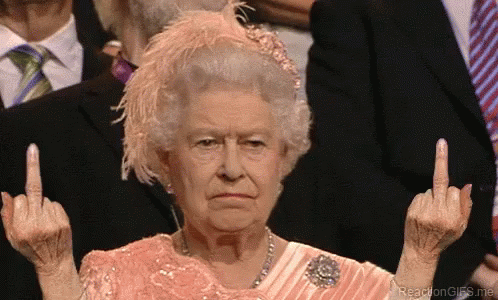-
Hey, guest user. Hope you're enjoying NeoGAF! Have you considered registering for an account? Come join us and add your take to the daily discourse.
You are using an out of date browser. It may not display this or other websites correctly.
You should upgrade or use an alternative browser.
You should upgrade or use an alternative browser.
Today is Bobby Koticks last day, say something nice to him as he exists the industry
- Thread starter havoc00
- Start date
Iced Arcade
Member
havoc00
Member
Bobby Good Guy KotickYou look like a little Troll, Bobby.
Oh you said something nice?
Activision Blizzard CEO Bobby Kotick is using the coronavirus pandemic to (safely) get closer to his employees.
Kotick revealed Tuesday that he gave out his personal phone number to 10,000 workers and said he “encouraged every single employee that has a concern that relates to their health care” to contact him. A “few hundred” have reached out so far, he told CNBC.
Kotick said that luckily only a “small number” of the video game-maker employees have contracted Covid-19. He’s using the pandemic to bolster the company’s health care options, including making private doctors available, paying for some employee drug co-pays, and offering telehealth options.

Activision Blizzard CEO gives his personal phone number to 10,000 employees | CNN Business
Activision Blizzard CEO Bobby Kotick is using the coronavirus pandemic to (safely) get closer to his employees.
Men_in_Boxes
Snake Oil Salesman
Come to PlayStation and reign for the next two decades!
Fart Knight
Al Pachinko, Konami President
Represent.
Represent(ative) of bad opinions
I like Call of Duty and it has the best gunplay in an FPS
mansoor1980
Gold Member
twilo99
Member
I like Call of Duty and it has the best gunplay in an FPS
Well, if we are being honest, it definitely does have top tier gunplay.
StreetsofBeige
Gold Member
Thank you keeping Activision alive, COD and Diablo. Rest of games I dont care.
PaddyOCanager
Member
Salty Popsicle
Banned
havoc00
Member
“Hey Bobby. Nice to see you on your last day. Maybe with all this free time, you’ll be taller and less fat next time we see eachother? Would be a cool surprise mechanic.”
Mister Wolf
Member
He had a good run. One of the best.
havoc00
Member
I like how he triggers virgins

havoc00
Member
If he gets Silent Hill slots into Atlantic City id love him foreverCOD lovers feasted during his reign. I hope he goes to work for Konami
twilo99
Member
Thank you keeping Activision alive, COD and Diablo. Rest of games I dont care.
He killed Starcraft and will never be forgiven
simpatico
Member
I just need yearly AAA 2D IgaVanias.If he gets Silent Hill slots into Atlantic City id love him forever
FinalBossWithTheMostPower
Member
twilo99
Member
Not bad, but that Patagonia vest has to go
Spukc
always chasing the next thrill
Moba sheit killed rts games don’t hate the game hate the playersHe killed Starcraft and will never be forgiven
DaleinCalgary
Member
The real Diablo has been killed.
But he's stinking rich so eat a di&k
But he's stinking rich so eat a di&k
StreetsofBeige
Gold Member
Love him or hate him. If it wasnt for Kotick and his investor buddies buying failing Mediagenic (who owned Activision IPs at the time) and turned it around as Activision, the company might had disappeared.

 en.wikipedia.org
en.wikipedia.org
Bobby Kotick had become interested in the value of the video game industry following the crash, and he and three other investors worked to buy Commodore International in an effort to gain access to the Amiga line of personal computers. After failing to complete purchase, the group bought a company that licensed Nintendo characters, and through Nintendo was directed to the failing Mediagenic.[35] Kotick was drawn to buy out Mediagenic not for its current offerings but for the Activision name, given its past successes with Pitfall!, with hopes to restore Activision to its former glory.[36] Crane said that Kotick has recognized the Activision brand name could be valued around $50 million and rather than start a new company and spend that amount to obtain the same reputation, he saw the opportunity to buy the failing Mediagenic at a bargain price and gain Activision's reputation with minimal cost.[10] Kotick and additional investors bought Mediagenic for approximately $500,000 in 1991. This group of investors included real estate businessman Steve Wynn and Philips Electronics.[37][35]
Kotick became CEO of Mediagenic on its purchase and made several immediate changes: He let go of all but 8 of the companies' 150 employees, performed a full restructuring of the company, developed a bankruptcy restructuring plan, and reincorporated the company in Los Angeles, California.[19] In the bankruptcy plan, Kotick recognized that Mediagenic still had valuable assets, which included the Infocom library as well as its authoring tools to make games, Activision's distribution network, and licenses to develop on Nintendo and Sega home consoles.[34] Kotick offset some debt by giving stock in the company to its distributors as to keep them vested in the company's success.[34] Kotick also had the company reissue several of its past console and Infocom titles as compilations for personal computers. Kotick had also recognized the value of the Zork property from Infocom, and had the company develop a sequel, Return to Zork. Combined, these steps allowed Mediagenic to fulfill on the bankruptcy plan, and by the end of 1992, Kotick renamed Mediagenic to the original Activision name.[34] The new Activision went public in October 1993, raising about $40 million,[19] and was listed on NASDAQ under its new ticker symbol ATVI.[37]
By 1995, Kotick's approach had met one promise he made to investors: that he would give them four years of 50% growth in revenues while remaining break-even. Reaching this goal, Kotick then set Activision on his second promise to investors, to develop high-demand games and make the company profitable by 1997.[34]
Activision published the first-person perspective MechWarrior in 1989, based on FASA's pen-and-paper game BattleTech. A sequel, MechWarrior 2, was released in 1995 after two years of delays and internal struggles, prompting FASA not to renew their licensing deal with Activision. To counter, Activision released several more games bearing the MechWarrior 2 name, which did not violate their licensing agreement. These included NetMech, MechWarrior 2: Ghost Bear's Legacy, and MechWarrior 2: Mercenaries. The entire MechWarrior 2 game series accounted for more than US$70 million in sales.
Activision procured the license to another pen-and-paper-based war game, Heavy Gear, in 1997. The video game version was well received by critics, with an 81.46% average rating on GameRankings and being considered the best game of the genre at the time by GameSpot. The Mechwarrior 2 engine was also used in other Activision games, including 1997's Interstate '76 and 1998's Battlezone.

Activision - Wikipedia
Purchase by Bobby Kotick (1991–1997)[edit]
Davis' management of Mediagenic failed to produce a profitable company; in 1991, Mediagenic reported a loss of $26.8 million on only $28.8 million of revenue and had over $60 million in debt.[11][34] Cyan severed their contract with Activision, and turned to Broderbund for publishing, including what would become one of the most significant computer games of the 1990s, Myst.[34]Bobby Kotick had become interested in the value of the video game industry following the crash, and he and three other investors worked to buy Commodore International in an effort to gain access to the Amiga line of personal computers. After failing to complete purchase, the group bought a company that licensed Nintendo characters, and through Nintendo was directed to the failing Mediagenic.[35] Kotick was drawn to buy out Mediagenic not for its current offerings but for the Activision name, given its past successes with Pitfall!, with hopes to restore Activision to its former glory.[36] Crane said that Kotick has recognized the Activision brand name could be valued around $50 million and rather than start a new company and spend that amount to obtain the same reputation, he saw the opportunity to buy the failing Mediagenic at a bargain price and gain Activision's reputation with minimal cost.[10] Kotick and additional investors bought Mediagenic for approximately $500,000 in 1991. This group of investors included real estate businessman Steve Wynn and Philips Electronics.[37][35]
Kotick became CEO of Mediagenic on its purchase and made several immediate changes: He let go of all but 8 of the companies' 150 employees, performed a full restructuring of the company, developed a bankruptcy restructuring plan, and reincorporated the company in Los Angeles, California.[19] In the bankruptcy plan, Kotick recognized that Mediagenic still had valuable assets, which included the Infocom library as well as its authoring tools to make games, Activision's distribution network, and licenses to develop on Nintendo and Sega home consoles.[34] Kotick offset some debt by giving stock in the company to its distributors as to keep them vested in the company's success.[34] Kotick also had the company reissue several of its past console and Infocom titles as compilations for personal computers. Kotick had also recognized the value of the Zork property from Infocom, and had the company develop a sequel, Return to Zork. Combined, these steps allowed Mediagenic to fulfill on the bankruptcy plan, and by the end of 1992, Kotick renamed Mediagenic to the original Activision name.[34] The new Activision went public in October 1993, raising about $40 million,[19] and was listed on NASDAQ under its new ticker symbol ATVI.[37]
By 1995, Kotick's approach had met one promise he made to investors: that he would give them four years of 50% growth in revenues while remaining break-even. Reaching this goal, Kotick then set Activision on his second promise to investors, to develop high-demand games and make the company profitable by 1997.[34]
Activision published the first-person perspective MechWarrior in 1989, based on FASA's pen-and-paper game BattleTech. A sequel, MechWarrior 2, was released in 1995 after two years of delays and internal struggles, prompting FASA not to renew their licensing deal with Activision. To counter, Activision released several more games bearing the MechWarrior 2 name, which did not violate their licensing agreement. These included NetMech, MechWarrior 2: Ghost Bear's Legacy, and MechWarrior 2: Mercenaries. The entire MechWarrior 2 game series accounted for more than US$70 million in sales.
Activision procured the license to another pen-and-paper-based war game, Heavy Gear, in 1997. The video game version was well received by critics, with an 81.46% average rating on GameRankings and being considered the best game of the genre at the time by GameSpot. The Mechwarrior 2 engine was also used in other Activision games, including 1997's Interstate '76 and 1998's Battlezone.
Werewolf Jones
Member
He did a good job at exposing Tim Schafer. Everything he said about him was true.
simpatico
Member
Diablo 4 is the best Diablo. (for people who only want to play the game for 60 hours and not turn it into a lifestyle)The real Diablo has been killed.
But he's stinking rich so eat a di&k
Venuspower
Member
apocaliptic
Member
Fuck you Bobby














